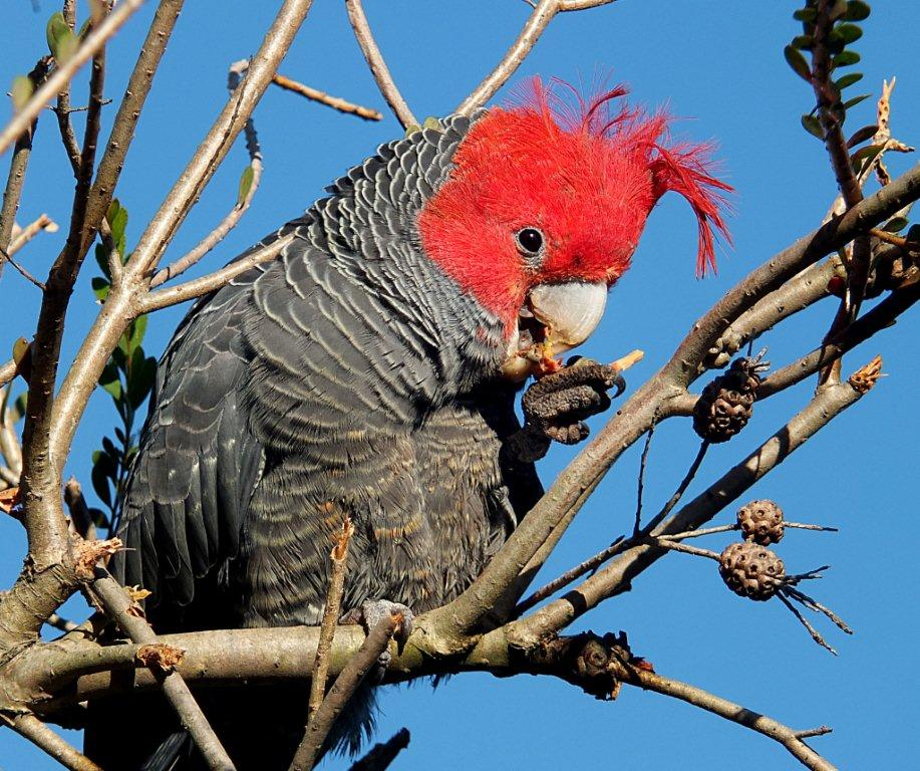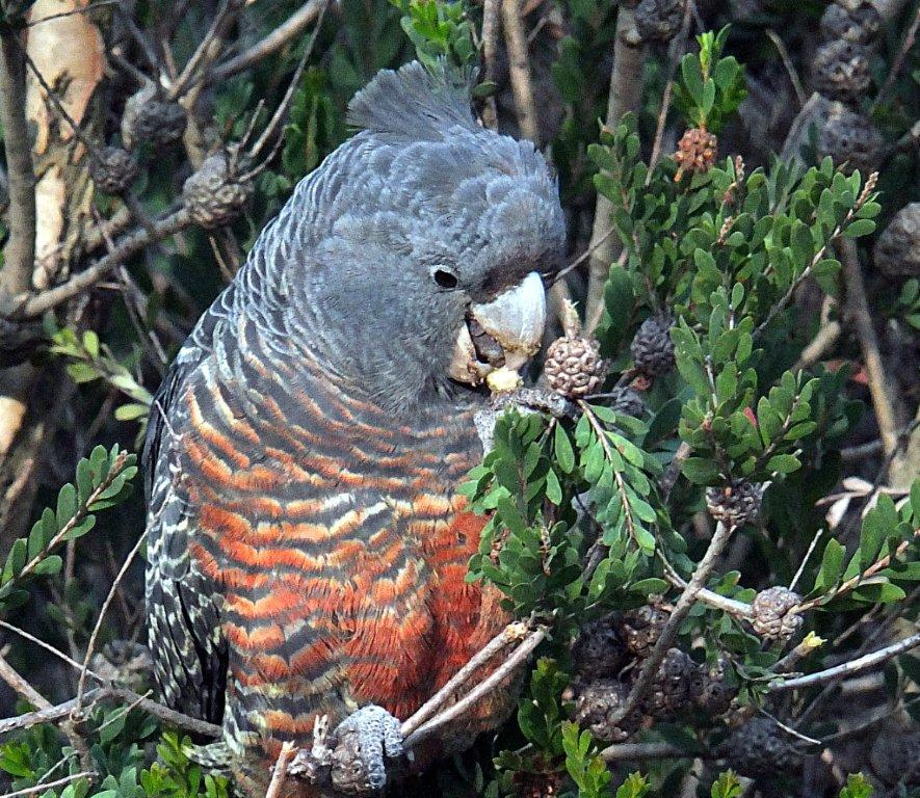
My recent move from Heyfield to West Gippsland has introduced me to different habitat and different birds. Rose Robins, Large-billed Scrubwrens, Black-faced Monarchs and so on were few and far between further east!
Photos and words by ‘Gouldiae’. Above: male Gang-gang. Below: female Gang-gang.
The last few mornings however one very familiar call has greeted me.
ADVERTISEMENT
Around this time of year, like quite a number of other species, the Gang-gang Cockatoos come down from the mountains to spend the winter in the low country’s warmer climes. You are alerted to their arrival by either their creaky growl, rusty hinge-like call or by the sound, and sometimes the feel, of discarded nuts and berries dropping to the ground from the canopy of particular trees – acacias, hakeas, cypress pines to name a few.
The Gang-gang is very approachable when feeding, a quite unusual trait for a bird and a particularly handy one for a birdwatcher. They will often return to the same tree for several days until they have virtually exhausted the food supply. A particular hakea beside the 18th green at the Heyfield Golf Club is stripped nearly bare every year!

Common to us in Gippsland, this stunning bird is not a widespread species. It only occupies a thin coastal strip from around mid northern New South Wales, down through Victoria and just over the border with South Australia.
ADVERTISEMENT
Like most bird species, the male Gang-gang with his fiery red head and crest is the more striking of the pair, but if you get the chance for an up-close view, the subtle red/tan barring on the chest plumage of the female is beautiful.
Despite the damage they can inflict on a young tree or shrub, the Gang-gang is a welcome invader to my garden.
For more from the author, click here to visit ‘Gouldiae’s Blog’.



